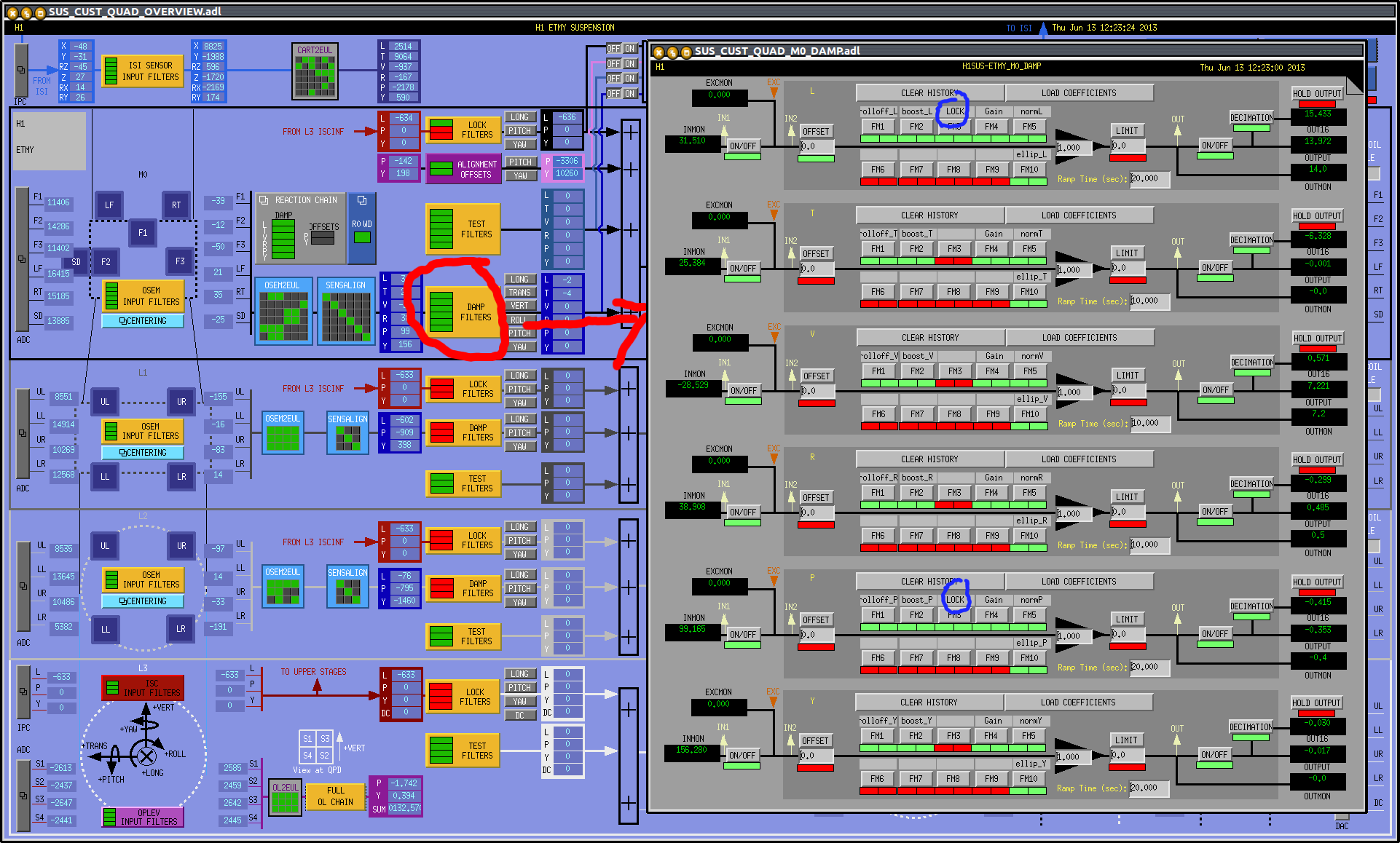ChrisM, MichaelR, GregorioT, RickS
This morning, we moved the periscope structure about a foot toward the BSC chamber, lifted it off of the teflon highway strips using the jack screws and support plates, installed the flexures, loaded them using the flexure adjustment screws, and removed the support plates so that the structure was supported by the flexures only.
Everything went smoothly. The structure appears to be very rigidly mounted when on the flexures. We were not able to move it, even with some pretty hard bumps.
We then lowered it back on to the teflon highway strips using the jack screws and support plates, slid it down the staging location at the BSC end of the A7 Adapter, supported it in the adapter using the upper and lower support plates, removed the stabilizing slides, rotated it 90 deg. to its staging orientation, and installed the rotation stabilizing bars. (See photos).
We did all the work today from the BSC side only. We wanted to try this because we won't have access to the other side when the Cryopump/Manifold baffle is in place. It was easy working from the BSC side, so no reason to go to the other side.
The A7 Adapter flange protectors arrived just after we finished our inside work. We installed them on the flange (see last photo).
We plan to leave the Pcal periscope structure in this location and orientation until the Cryopump/Manifold baffle is installed, then move it into the final location next to the baffle and do the final alignment with the help of IAS.



















